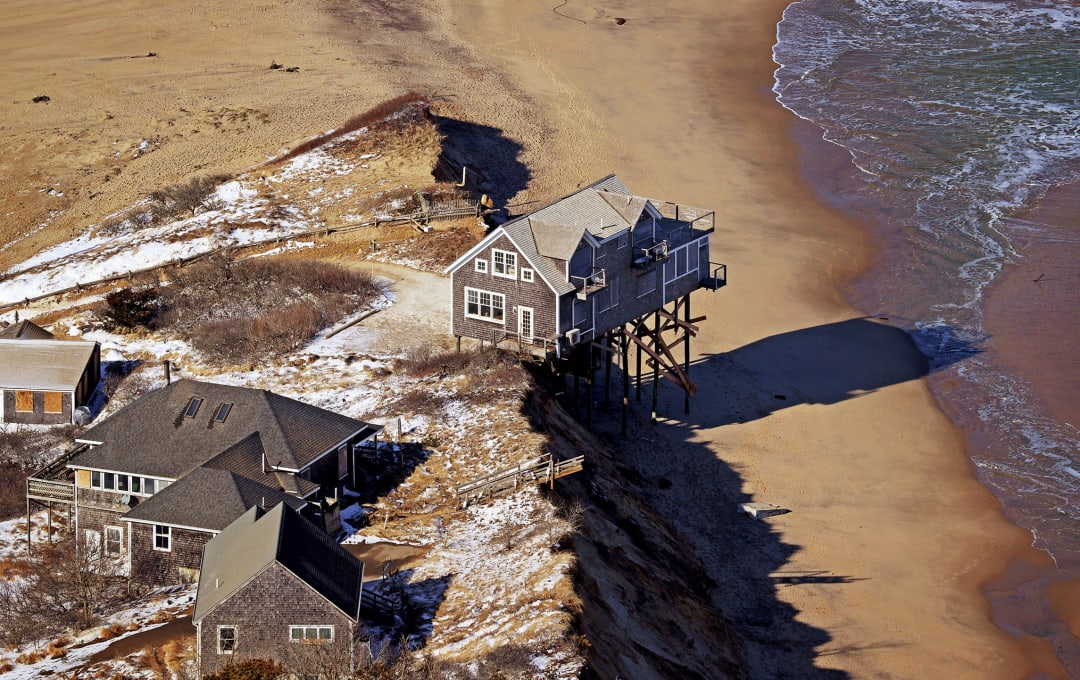Key regional climate issues: A Guide for architects to drive change

An aerial view of a building on pilings compromised by coastal erosion Truro, Mass.
On every project, architects plan for future conditions, including additional capacity, new technologies, deconstruction, and our changing climate. Using the drop down menu below, this interactive resource leverages the Fourth National Climate Assessment (NCA4) to identify key climate resources and issues for 10 regions using two scenarios: the highest emissions scenario available and a midrange scenario consistent with other global resources.
About the National Climate Assessment
The NCA4 uses climate scenarios and modeling efforts generated for the global Intergovernmental Panel on Climate Change (IPCC) assessments to project the impact of greenhouse gas emissions on the climate. These scenarios are called Representative Concentration Pathways (RCPs) for greenhouse gases. They have become standard references for virtually all work concerning climate change and should be part of architects’ lexicon.
All of the RCPs result in similar global temperature and sea-level rise outcomes for the next few decades. By midcentury, however, the differences between these scenarios become substantial.
The NCA4 focuses primarily on two scenarios for impacts, adaption, and vulnerability analyses:
- RCP8.5 – the highest emissions scenario available.
- RCP4.5 – a midrange scenario consistent with other global reports. Although RCP4.5 is not the lowest scenario available, it was deemed to be more consistent with other reports and more useful for planning purposes.
For more information, go to the NCA4 appendix: Data Tools and Scenario Products.
Select your region to get started:
Additional national resources
Fourth National Climate Assessment: Climate Science Special Report: An assessment of the science of climate change with a focus on the United States, to serve as the foundation for efforts to assess climate-related risks and inform decision-making about responses.
U.S. Climate Resilience Toolkit: A compilation of resources and tools to support decision makers determine local climate threats and vulnerabilities and reduce their risks from impacts of climate variability and change.
Image credits

David L. Ryan, The Boston Globe via Getty Images
More from AIA
How To
Framework for Design Excellence
A resource, accessible to all architects, that closes the information gap to designing high performing, equitable, beautiful buildings
The Fundamentals of Resilient & Climate Adaptive Design
Lists principles that contribute to resilience and climate adaptive goals; providing a lens through which a building or design can be evaluated.
How To
AIA Resilience and Adaptation Certificate Series
Do you want to integrate resilience into the design services your firm offers? The Resilience and Adaptation series is your answer. This exclusive multi-course series covers hazard mitigation, community resilience, and adaptation. Take all courses to learn best practices for mitigating risk for hazards, shocks, and stresses and adapting to changing conditions. Perfect for mid-career professionals.
